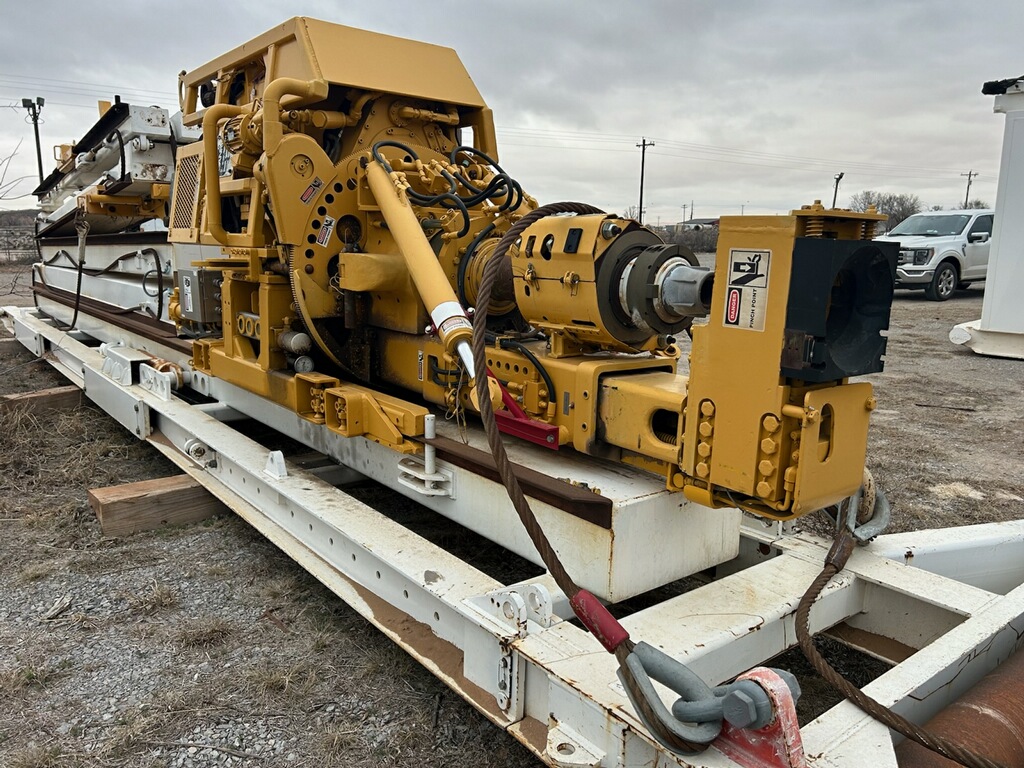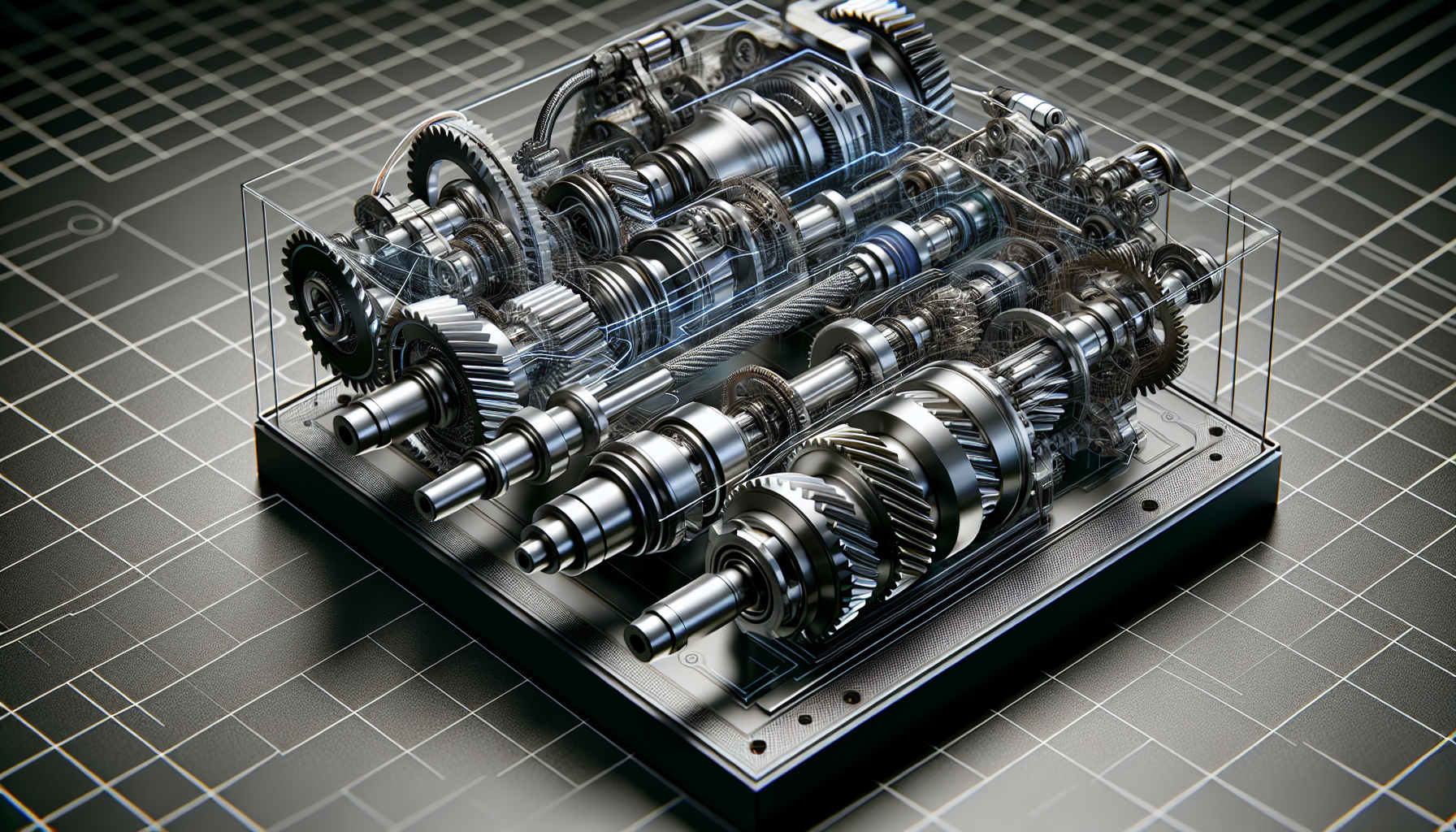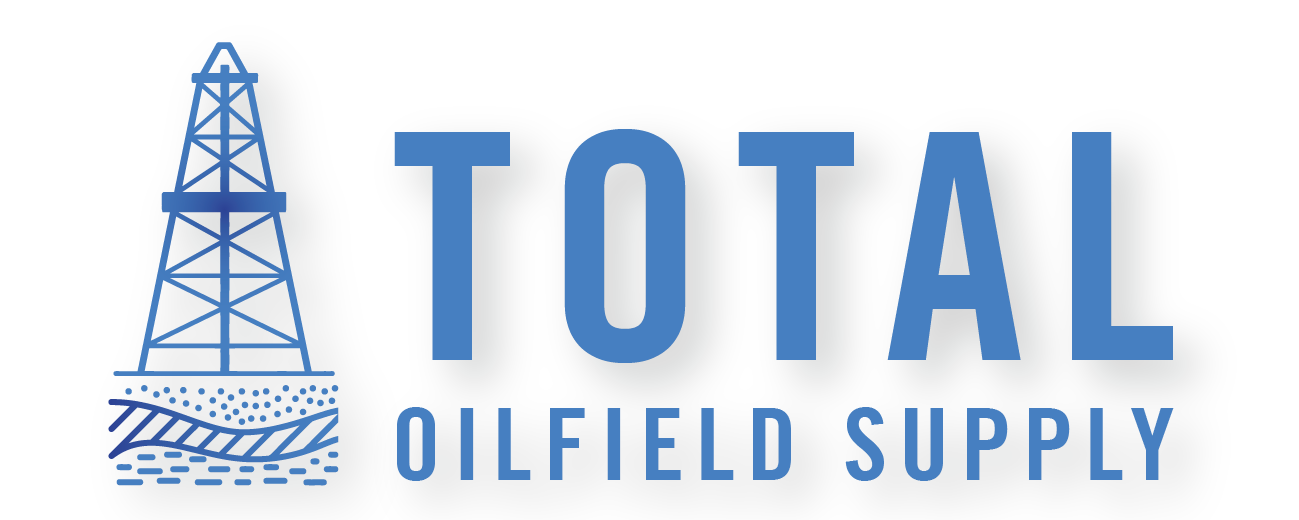Top drives are critical for modern drilling operations, providing continuous rotational force that enhances both efficiency and safety. These systems have effectively replaced traditional equipment, changing how drilling rigs operate. This article delves into the specifics of top drive systems, offering you the know-how on their components, advantages, and operational guidelines for the top drive for drilling rig, without the sales pitch or technical jargon.
Key Takeaways
The top drive is a revolutionary mechanical device in modern drilling that enhances efficiency by providing continuous rotation and replacing traditional rotary table and kelly systems.
Top drive technology offers numerous advantages such as minimized manual labor, reduced operational risks, improved safety, and the ability to handle longer sections of drilling pipe, substantially increasing drilling productivity.
Implementation, operation, and maintenance of top drive systems require specific technical knowledge, and despite higher initial costs, they provide long-term operational and economic benefits over traditional Kelly drive systems.
Exploring the Top Drive: A Drilling Rig Revolution

The top drive, a mechanical device on a drilling rig, has become a cornerstone of modern drilling operations. Composed of electric or hydraulic motors, the top drive is connected to the drill string, which brings about a revolution in drilling operations. This technical marvel has replaced the traditional rotary table and Kelly drive systems and has been designed to:
Move along the mast of the drilling rig for various operations
Provide continuous rotation of the drill string
Apply torque and weight to the drill bit
Facilitate the drilling process by reducing the time required for tripping operations
While top drives supply the primary torque for drilling, the presence of a rotary table on the rig, equipped with a master bushing, provides stability to the drill string and acts as a secondary, backup rotary system.
Definition and Functionality of Top Drives
Top drives, equipped with a power capacity of at least 1000 horsepower, rotate the drill string during drilling operations. They serve as a modern replacement for traditional rotary table or Kelly drive systems. These systems are designed to be moved along the mast of the drilling rig for various operations, an advancement that has transformed the drilling industry.
Although top drives supply the primary torque for drilling, the rotary table’s presence on the rig ensures stability to the drill string and acts as a secondary, backup rotary system.
Evolution from Traditional Systems
The evolution from traditional Kelly drive systems, which utilized kelly bushing, to advanced top drive systems marks a significant milestone in drilling technology, particularly in the gas industry.
Key benefits of top drive systems include:
Enhanced drilling speed
Reduced connection time
Simplified floor layout
Departure from the traditional rotary table role
Top drive systems have the capability to drill with a drill pipe stand comprising three joints, in contrast to Kelly systems, which use a single joint drill pipe. This revolution in drilling technology has simplified operations, enhanced safety, and improved efficiency.
The Anatomy of Top Drive Systems

A top drive system, a crucial component of modern drilling rigs, provides direct rotational force to the drill string from its position above, replacing traditional rotary table and Kelly drives. The basic components of a top drive system include:
Internal Blowout Preventer (IBOP)
Motor
Faucet assembly
Gearbox
Pipe handling device
Slide and guide rails
Driller’s control console
Frequency conversion system
Each part plays a specific role in the drilling system:
The IBOP prevents blowouts while drilling
The motor powers the system
The faucet assembly directs drilling fluid
The gearbox transmits mechanical power
The pipe handling device manipulates drill pipes
The slide and guide rails facilitate vertical movement
The driller’s control console allows operation and monitoring
The frequency conversion system manages the motor speed.
Main Components and Their Roles
The top drive system boasts several key components that aid in drilling operations. These include:
Motors linked to the drill string via a quill, which enable the rotation needed for drilling
A gearbox that adapts the motor’s rotational energy to fit the requirements of the drilling operation
The torque track, which provides the torque needed for making up drill string connections
The traveling block, in conjunction with the derrick’s guide system and the crown block, which moves the drill string and top drive vertically and imparts torque to the drill pipe
Each of these components plays a distinct role that collectively contributes to the efficiency and effectiveness of the top drive system.
Integration with the Drill String
The top drive system’s integration with the drill string is a critical aspect of its operation. It connects to the drill string by facilitating the rotation of the drill pipe directly from the upper space of the derrick, allowing for streamlined drilling operations. It can connect a full 90-foot stand of drill pipe in one operation, significantly increasing efficiency by reducing the time needed for adding sections during drilling.
This integration also enhances safety by allowing the entire drill string to be retrieved from the hole for drill bit replacements without the need to disconnect the drill string, thus minimizing the risks associated with manual handling.
Advantages of Implementing Top Drive Technology
The implementation of top drive technology has brought a plethora of advantages to drilling operations. It has:
Minimized the need for manual labor
Shortened drilling time
Lowered several operational risks
Enabled drilling rigs to reach greater depths in single operations
Enhanced both safety and operational efficiency.
They also contribute to reduced connection times during drilling and tripping operations by facilitating the management of longer drill pipe sections. Unlike Kelly systems, top drives can rotate the drill string while simultaneously applying downward pressure, offering a significant operational advantage.
Enhancing Drilling Efficiency
The efficiency of drilling operations has been significantly enhanced by the use of top drive systems. They allow for the connection of a full 90-foot stand of drill pipe in one operation, which is considerably longer than the 30-foot sections associated with traditional rotary table rigs. This capability improves drilling efficiency by allowing for rapid and cost-effective connections and disconnections of longer drill pipe sections.
Continuous drilling is supported by the top drive system while providing direct torque to the drill bit, leading to less downtime and improved overall drilling operations. The top drive system also facilitates efficient management of complex downhole conditions by enabling circulation and rotation of the drill string during tripping operations, thus minimizing risks and reducing downtime.
Improving Safety on the Rig Floor
Improving safety on the rig floor is one of the key advantages of implementing a top drive system. The adoption of top drives results in:
Fewer connections and manual tasks, thereby reducing the exposure of rig crews to potential injuries
Minimized frequency and duration of tasks requiring rig hands to work in hazardous conditions
Ability to add multiple joints of drill pipe at once, reducing crew exposure to potential injuries compared to conventional methods
Other safety features include an IBOP safety device for sealing the drill string and preventing blowouts, and a link tilt system that negates the need for workers to lean out dangerously into the mast.
Top Drive Systems Across Various Rigs
The versatility of top drive systems is evident in their application across different types of drilling rigs. They are deployed on all types of rigs, enhancing the traditional drilling operations previously managed by rotary table and Kelly drive systems.
On offshore rigs, top drive systems accommodate the unique challenges of deepwater and harsh environment drilling operations, optimizing efficiency and safety. They are also utilized on truck-mounted rigs and various other land-based rigs, replacing conventional drilling systems.
The adaptability of top drive systems across different rig types illustrates their versatile application in revolutionizing drill operations.
Adaptability to Offshore and Land Rigs
Top drive systems have proven to be highly adaptable to both offshore and land rigs. On offshore rigs, they are engineered to resist corrosion and mechanical stresses caused by marine environments, including waves and rig motion. For land rigs, top drive systems are adaptable to multiple drilling conditions, capable of efficient operation in remote and extreme environments.
This adaptability across different rig types underscores the versatility of top drives in various drilling operations.
Customization for Specific Drilling Needs
Top drive systems are not only versatile, but they also offer customization options for specific drilling needs. They have significantly increased the efficiency of horizontal drilling, which has been instrumental in the success of projects within shale formations such as the Marcellus Shale, a major source of natural gas. Customization options include a range of tonnage capacities from 150 ton to 1000 ton, catering to diverse drilling requirements and depths.
Innovative top drive models like the Global Drilling Machine (GDM) are engineered to provide advanced performance coupled with reliable service and support in varied drilling operations.
Operational Insights: Using a Top Drive System
Operating a top drive system requires specific technical knowledge and skills. These systems provide continuous rotational torque, which enables more efficient drilling operations with fewer stoppages for making pipe connections. The top drive system enhances precision in drilling by allowing operators to control the speed and direction of the drill bit more effectively from the rig floor.
Advanced software in top drive systems contributes to fine-tuning the drilling process by allowing for precise adjustments to rotational speed and torque application. Top drives are equipped with mechanisms to detect and mitigate stick-slip issues, thus ensuring smoother rotational control and minimized wear on equipment.
Step-by-Step Operation Process
Operating a top drive system involves a series of steps that are crucial for successful drilling operations. The top drive on a drilling rig is capable of vertical movement along the derrick, allowing precision in the control of the drilling process by imparting the necessary torque to the drill string. Drilling begins when the driller engages the top drive motor, which rotates the attached drill string and, as a result, turns the drill bit to penetrate the rock formations.
Adding a new drill pipe segment to the drill string involves moving pipes from the mousehole and connecting them, a process facilitated by the top drive. The top drive system can rotate the drill pipe, as well as the drill stem, even while tripping, reducing the risk of stuck pipe by ensuring continuous movement within the wellbore.
Troubleshooting Common Issues
Troubleshooting top drive problems requires diagnostic expertise and a thorough understanding of the system. The process usually starts with a series of diagnostic questions to identify potential problems, followed by recognizing the correct sequence of troubleshooting steps to resolve the issue.
Some common issues include electrical faults in the drive or control systems, non-standard procedures during operations, and stuck pipe situations. Effective troubleshooting often involves consulting detailed diagrams and maintaining strict adherence to safety procedures.
Maintenance and Upkeep of Top Drive Systems

Regular maintenance and upkeep are vital for the optimal performance of top drive systems. Due to their advanced design, top drives require specific technical knowledge and expertise for repair and maintenance to prevent operational disruptions.
Maintenance services for top drive systems encompass a range of activities, including installation, disassembly, transportation, inspection, troubleshooting, repair, and major overhauls.
Routine Maintenance Procedures
Routine maintenance procedures are essential for the long-term performance and durability of top drive systems. Regular maintenance and inspections can help identify potential problems with a top drive system before they lead to downtime or accidents. This includes daily monitoring of top drive performance and immediate resolution of any arising issues.
Long-term onsite maintenance can involve continuous supervision by a specialist who can maintain several top drives, reducing the need for additional personnel and service costs.
Advanced Technologies for Maintenance Support
Advanced technologies play a crucial role in supporting the maintenance and monitoring of top drive systems. Continuous monitoring systems are critical for top drive maintenance, allowing for predictive maintenance and reducing the risk of unexpected failures. The use of wireless vibration sensors facilitates real-time data monitoring, enhancing the safety of operations and enforcing timely predictive maintenance.
Software solutions, coupled with hardware like the Electronic Drilling Recorder (EDR), provide comprehensive dashboards and data analyses essential for maintenance quality checks and identifying the root causes of issues.
Comparing Top Drives with Alternative Drive Systems
A comparison of top drive systems with traditional Kelly drive systems offers a clear picture of their advantages and disadvantages. Top drives enable continuous drilling and can handle longer stands of pipe, which contrasts with the intermittent drilling process of the traditional Kelly system that manages shorter lengths of pipe. Compared to Kelly systems, top drives offer enhanced torque control and higher rotation speeds, leading to increased drilling efficiency and potentially faster well completion.
However, the initial costs for top drive systems are typically higher than for Kelly drives; however, improved drilling efficiency and reduction in non-productive time (NPT) offer long-term savings.
Performance Comparison with Kelly Systems
When comparing the performance of top drives with Kelly systems, top drives demonstrate clear advantages. They enable the drill string to continue rotating and circulating when back reaming out of a hole, unlike Kelly systems which lack this capability. However, it’s critical to have a backup plan, such as reverting to a conventional rotary table, to maintain drilling operations in the event of a system failure.
Cost-Benefit Analysis
Evaluating the long-term cost savings and benefits of implementing top drive systems reveals their economic viability. Top drive systems can reduce the time required to drill a well by approximately 20% when compared to traditional rotary table systems. The implementation of a top drive system can result in reduced labor costs, as it necessitates fewer crew members on the rig floor.
Due to more consistent application of torque and reduced instances of pipe stick-slip, top drive systems contribute to a longer lifespan for drill pipes. Advanced monitoring solutions integrated with top drive systems play a crucial role in preventing costly downtime and the need for equipment replacements.
Let Total Oilfield Help you Source your Next Top Drive
Whether you’re new to the world of drilling or a seasoned veteran, sourcing your next top drive system can be a daunting task. But worry not, Total Oilfield is here to help. With a network of vendors, Total Oilfield can assist you in sourcing the ideal top drive system tailor-made for your drilling needs.
So, why wait? Inquire today and revolutionize your drilling operations with a top drive system that guarantees efficiency, safety, and productivity up to your exact specifications.
View Available Top Drives.
Summary
In conclusion, top drive systems have undeniably revolutionized drilling operations, offering enhanced efficiency, improved safety, and adaptability across various types of rigs. Their advanced design, coupled with their versatility, makes them a valuable component in both offshore and land-based drilling operations. However, as with any advanced machinery, they require regular maintenance and troubleshooting to ensure optimal performance. As the drilling industry continues to evolve, so will the role of top drives, further cementing their place as a cornerstone of modern drilling technology.
Frequently Asked Questions
What is the difference between Kelly and top drive?
The main difference between Kelly and top drive is that while Kelly and a swivel are used to rotate the drill stem, a top drive replaces the rotary table, Kelly, and swivel, doing the work of all three. This modification works much like a modified swivel.
How much can a top drive pull?
A top drive can generally pull loads ranging from 150 to 1,250 tons, depending on its rating. Choose the appropriate top drive based on your hoisting needs.
What are the advantages of top drive?
The top drive offers advantages such as reducing manual labor and drilling time, minimizing risks, and improving safety and efficiency in the drilling industry, as well as facilitating the handling of multiple drill pipe joints and rotation during tripping operations. This technology enhances drilling operations by combining various benefits, ultimately increasing productivity and safety.
What is the highest position on a drilling rig?
The highest position on a drilling rig is the tool pusher, who is responsible for every crew on the rig. This manager oversees all operations at the drilling location.
What is the top drive on a rig?
The top drive on a rig is a mechanical device that provides torque to the drill string, allowing it to drill a borehole. It is located at the swivel’s place below the traveling block and moves vertically up and down the derrick.
